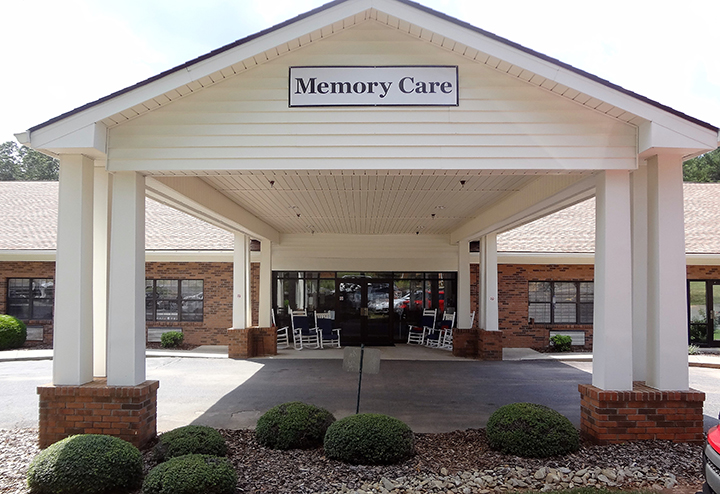Producing a Safe and Supportive Setting: In-Home Memory Care Basics
Establishing a nurturing and safe and secure atmosphere for individuals calling for in-home memory treatment is critical to their well-being and lifestyle. From guaranteeing safety and security within the home to utilizing reliable communication techniques and carrying out memory-friendly design components, there are important parts that contribute to an all natural care strategy. By concentrating on creating an encouraging community that accommodates the distinct demands of those with memory impairments, caretakers can significantly improve the day-to-day experiences of their loved ones.

Safe Living Atmosphere
Developing a safe and hazard-free living atmosphere is paramount when supplying at home memory care for people with cognitive impairments. Ensuring the security of the specific with memory loss is important to protect against crashes and advertise a feeling of well-being. One vital facet of creating a safe living atmosphere is to eliminate any kind of potential hazards that might cause slides, journeys, or drops. This includes securing loose rugs, making sure ample lights in all locations of the home, and maintaining pathways clear of clutter.
In addition, it is very important to mount security functions such as grab bars in bathrooms and hand rails along stairs to give assistance and stop mishaps. Furthermore, utilizing technology such as motion sensors and alarm systems can inform caregivers if the individual wanders or is in distress. Developing a secure living atmosphere also involves implementing approaches to protect against roaming, such as using door alarms or locks to restrict access to dangerous locations. By prioritizing precaution and getting rid of prospective hazards, caretakers can offer a protected and supportive atmosphere for people with cognitive disabilities receiving at home memory care.
Reliable Communication Approaches
Carrying out tailored interaction strategies is necessary in fostering significant communications with individuals with cognitive disabilities in the context of at home memory care. Efficient interaction plays an essential duty in developing a helpful environment that enhances the wellness and top quality of life for individuals with memory issues. When interacting with a person experiencing cognitive decrease, it is necessary to make use of simple and clear language, preserve a tranquility and favorable tone, and provide visual hints to help understanding.
One trick strategy is to practice active listening, showing empathy, persistence, and regard throughout discussions. Non-verbal cues such as faces and body movement can additionally help convey understanding and support. Additionally, utilizing reminiscence therapy by going over previous experiences or making use of songs and art can take advantage of long-term memories, stimulating and sparking links involvement.
In addition, including normal regimens and constant communication patterns can offer a sense of familiarity and safety and security for individuals with memory impairments. By implementing these communication techniques, caregivers can develop purposeful links and promote a sense of convenience and rely on the at home memory care setting.
Memory-Friendly Layout
Offered the relevance of producing a supportive setting for people with memory problems through reliable communication techniques, the unification of memory-friendly layout aspects in the space comes to be imperative in optimizing their daily experiences and total wellness. Memory-friendly design concentrates on improving safety, convenience, and freedom for individuals with cognitive problems. Basic modifications can make a substantial difference, such as using contrasting colors to improve exposure and reduce complication, incorporating clear signs to assist navigation, and reducing mess to avoid sensory overload.
Incorporating acquainted components from the individual's past, such as individual pictures or favored items, can evoke favorable memories and create a sense of knowledge. Additionally, ensuring appropriate lighting levels, mounting grab bars in bathrooms, and carrying out non-slip floor covering can help stop drops and injuries. Creating a relaxing and soothing environment through using familiar aromas, soft textures, and tranquil audios can likewise advertise leisure and reduce anxiety. By integrating these memory-friendly layout elements, caregivers can supply a helpful and risk-free space that enables individuals with memory issues to preserve their self-reliance and lifestyle.
Daily Regimen Preparation
When creating a day-to-day regimen for individuals with memory issues, careful preparation is necessary to support their cognitive feature and total wellness. Establishing a structured schedule can aid lower confusion, disorientation, and anxiety usually experienced by those with memory problems. Begin by integrating familiar tasks that line up with the person's interests and choices. Consistency in everyday routines can supply a complacency and stability, aiding in the conservation of cognitive capabilities.
Versatility is crucial, as some days might call for changes based on the person's mood and energy levels. On a regular basis evaluating and adapting the everyday routine will assist ensure its efficiency in promoting a positive and reassuring environment for people with memory obstacles.
Assistance System Execution
Developing a durable network of helpful individuals plays a critical role in enhancing the top quality of treatment and wellness for individuals requiring memory support. Member of the family, close friends, medical care specialists, and neighborhood resources click here now can all add to developing a solid support group. Communication amongst these people is necessary to guarantee that the needs of the private with memory challenges are fulfilled properly.
Household participants are frequently the key caregivers and create the foundation of the support group. They supply everyday care, psychological support, and friendship. It is vital for member of the family to look for support and reprieve when needed to stop exhaustion and make certain the very best feasible care for their enjoyed one.
Along with article source family members support, including medical care professionals such as physicians, specialists, and nurses can provide customized treatment and assistance. These specialists can offer important understandings, clinical suggestions, and assistance in handling the individual's problem.

Conclusion
Finally, creating a risk-free and helpful setting for people with memory treatment demands is essential for their well-being. By establishing a safe living atmosphere, utilizing effective communication techniques, integrating memory-friendly style aspects, preparing daily regimens, and carrying out a strong support group, caregivers can help boost the top quality of life for those with amnesia. These necessary elements interact to develop a nurturing and encouraging atmosphere that promotes independence and enhances total high quality of life.
Producing a hazard-free and secure living setting is vital when offering in-home memory care for people with cognitive disabilities. By prioritizing safety and security steps and removing possible risks, caregivers can supply a safe and supportive setting for people with cognitive impairments obtaining in-home memory treatment.
Establishing a durable network of helpful people plays a critical duty in improving the quality of treatment and health for people needing memory support - Charlotte Memory Care. Communication amongst these individuals is vital to make sure that the requirements of the individual with memory obstacles are satisfied effectively

Comments on “Premier Charlotte Memory Care: Specialized Senior Citizen Care Solutions”